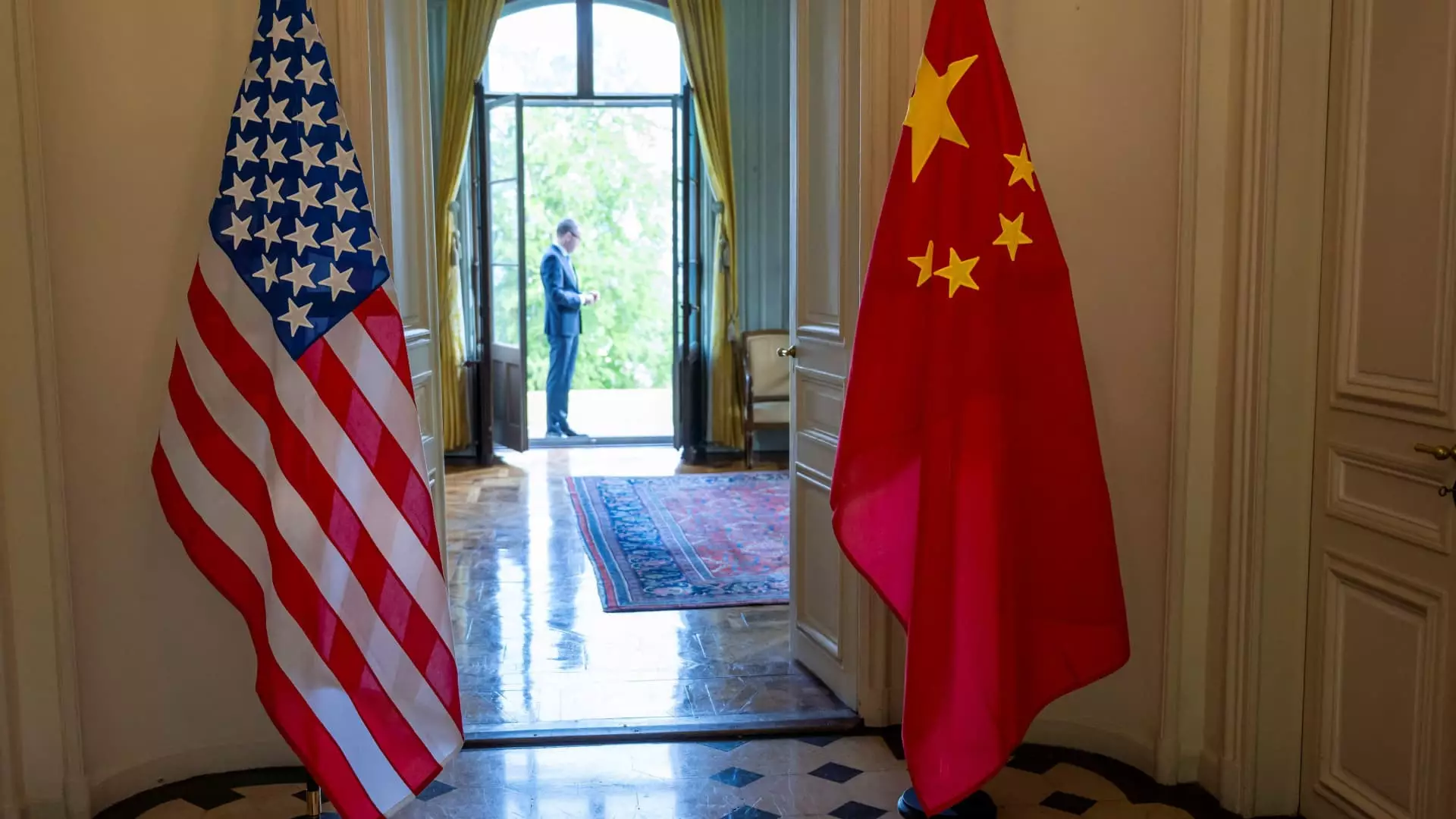The current state of U.S.-China trade discussions sits precariously at the crossroads of hope and frustration. Yet, despite ongoing diplomatic efforts, Treasury Secretary Scott Bessent’s assertion that the talks “are a bit stalled” reveals the chinks in the armor of negotiations that were once heralded as a pathway to mutual economic prosperity. The purported pause in dialogue necessitates a high-level intervention, with both nations’ leaders expected to engage directly. However, the reality is somewhat dismal, depicting a relationship strained by embittered disagreements and uninspired communications.
It was only a few weeks back that both countries celebrated a breakthrough agreement in Switzerland—a moment of optimism that seems to have quickly faded. Rolling back exorbitant tariffs for a limited time provided a band-aid solution, but it scarcely addresses the underlying tensions. The circumstances surrounding these negotiations are fraught with complexity and the hesitant nature of both governments to genuinely engage reflects a deeper malaise—an inability to grasp the magnitude of the situation.
Communication Breakdown: The Challenge of Direct Dialogue
One cannot overlook the intriguing dance of silence and guarded optimism surrounding potential talks between President Donald Trump and Chinese President Xi Jinping. The last significant conversation between them occurred in January, mere moments before Trump embarked on the journey of his second term. News of a possible future dialogue now feels more like a faint whisper lost in the wind, as China’s conditions for engagement lean heavily on eliminating “surprises” from the U.S.—a request that timely and productive communication will only sometimes satisfy.
As analysts dissect the geopolitical chessboard and its implications for global markets, it is evident that both leaders hold the keys to unlocking what could ultimately be a productive relationship. However, a lack of trust exacerbated by ongoing trade and tech tensions has created a communication stalemate that benefits neither party. Engage or withdraw—the choice appears stark, yet both sides seem tethered to their defensive postures, unwilling to concede any ground.
Technological Tensions and Export Controls
Compounding the existing economic disputes, the U.S.’s tech restrictions on sectors crucial to China—such as semiconductor production—paint a stark picture of bilateral relations marred by suspicion. China’s fervent call to the U.S.—to rectify its “wrong practices”—speaks volumes about Beijing’s growing impatience. The message embedded in diplomatic discourse is a reflection of China’s shifting strategy, wherein they increasingly position themselves as steadfast defenders of their economic sovereignty.
Moreover, discussions around rare earth elements—vital materials for both military and civilian applications—remain a notable hiccup in the negotiations. It is hard to ignore the irony: in a world striving for greater stability, these trade discussions serve to highlight just how precarious international relations can become. The perceived dual-use of technology only magnifies the stakes involved, where the road to establishing a harmonious relationship seems riddled with obstacles, mistrust, and a profound reluctance to abandon protectionist tendencies.
The Impact of Visa Revocations on Economic Relations
Recent unilateral decisions by the U.S. government to revoke visas for Chinese students further complicate the wider narrative of U.S.-China relations. This act is characterized by China as “fully unjustified,” and rightly so; it demarcates a withdrawal from what has traditionally been an influential cultural and intellectual exchange between the two nations. By closing doors instead of opening them, the U.S. not only risks alienating an entire generation of students and scholars but also risks stifling innovation derived from robust collaboration.
These veiled retaliatory actions incite a spirit of animosity that undercuts any hopeful rhetoric promoting cooperation. Educational exchange is rarely merely a bilateral transaction; it serves as a bridge that can help mitigate tensions. By neglecting the positive influences of such relationships, America may inadvertently be stifling its own economic potential, highlighting a shortsightedness that could have long-lasting ramifications.
The geopolitical landscape we find ourselves navigating today demands a more interdependent approach. The grim reality of a stalled negotiation, coupled with exacerbating tensions, serves as a clarion call—one that implores leaders from both sides to put aside their grievances and realize the broader implications of their decisions. As the world watches, the imperative remains: choose cooperation over confrontation, or face the inevitable consequence of deteriorating relations that we cannot afford.


Leave a Reply